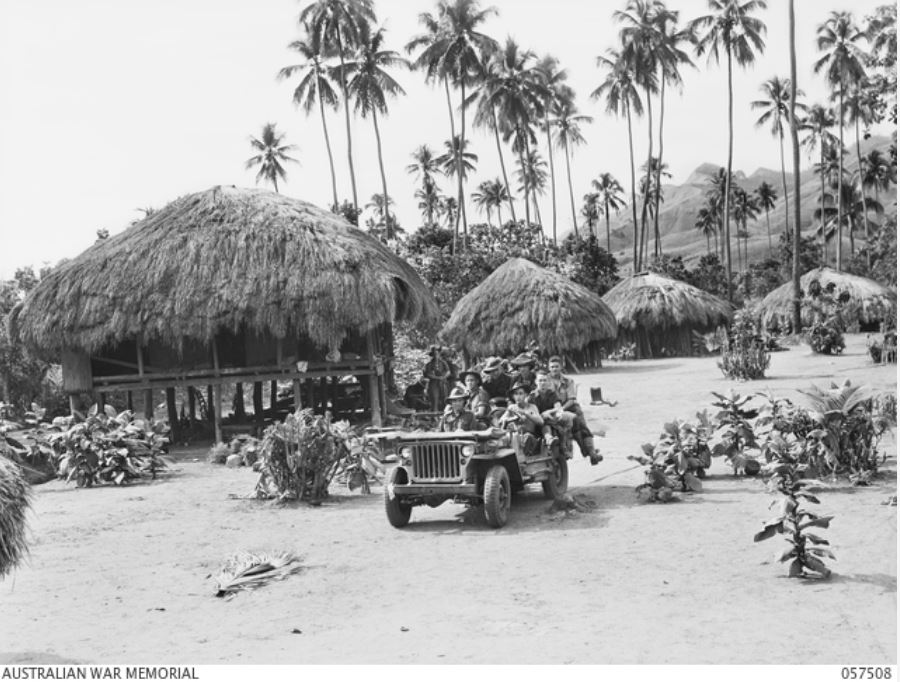2/6th Australian Commando Squadron
From Our Contribution
 22 Sep 1943 Kaiapit, New Guinea VIllage | |
 Unit colour patch | |
Brief History
The 2/6th Australian Independent Company' was formed in June 1942 at Darby in Victoria before moving to Yandina In Queensland during July. Soon after it moved to Townsville and then to New Guinea during August. Allocated to the 7th Infantry Division they were sent to the Kokoda Trail to provide flank protection and to undertake scouting. In October, with the Japanese attack rebuffed, they moved to Wanginela by air and then marched to Oro Bay by November to act as guides for US units that would subsequently be involved in the many bloody but unsuccessful attacks on Buna. In December the 2/6th was transferred to the 7th Australian Infantry Division at Soputa before moving to Port Moresby for a period of rest and re-organisation. The unit remained at Donadabu in case long range patrols were needed, rather than return to Australia as other units did. In March 1943 the main part of the unit returned to Australia, (leaving a detachment at Bena Bena in New Guinea), and following leave reassembled at Canungra in Queensland during April 1943.
In June 1943 the unit moved to Wongabel, and the following month moved to Port Moresby with the 7th Australian Infantry Division. Following the capture of Lae, they were flown to Leron River to assist in the capture of Kaiapit by providing right flank protect as the infantry moved up the Markham and Ramu Valleys. In October the unit was retitled as 2/6th Australian Cavalry (Commando) Squadron, but it was changed again in February 1944 to 2/6th Australian Commando Squadron. In November they were based at Kesawai, patrolling the hills to interdict the supply lines of the Japanese in the Shaggy Ridge Area. In March 1944 they moved to Lae before travelling back to Australia in April to establish themselves at Mapee in Queensland. In August they rejoined the 7th Infantry Division at Kairi here they waited for their next role. With the 7th Infantry Division that was to be a landing at Balikpapan to capture the oilfields and port. After moving to the staging area on Morotai, in July they landed on the second day at Balikpapan and advanced inland along the Milford Highway, patrolling until the end of the war. Of the 28 men who died while posted to this unit, 23 were either killed in action or died as a result of wounds received in action, four died of illness, and one by accidental drowning.
Unit Personnel
- Edward Ronald Bowring
- Edward Maurice Trew 19 Sep 1942 - 19 Nov 1945
Individual Honours
- 1 x Distinguished Service Order
- 2 x Military Cross
- 1 x Distinguished Conduct Medal
- 2 x Military Medal
- 23 x Mentioned in Despatches
- 1 x Foreign Award
Notes
Content has come from The Unit Guide - Volume 2 - The Australian Army 1939-1945, pages 2.495 & 2.496 - Graham R McKenzie-Smith - Big Sky Publishing - 2018